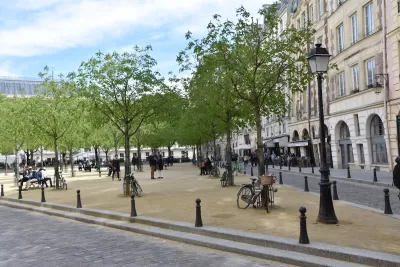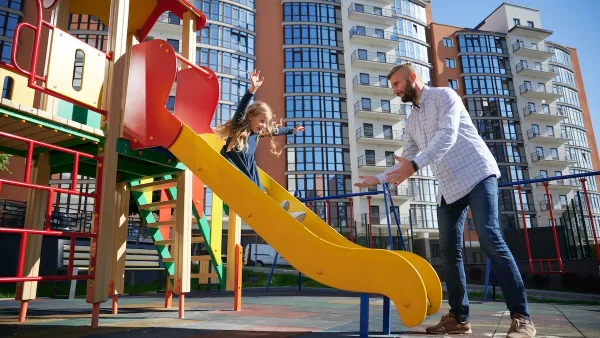To combat the epidemic of loneliness, Susan Henderson's evocative photos of “third places” reflect on how these spaces have evolved and their importance in fostering connection.

Henderson discusses the increasing issue of loneliness and emphasizes the importance of ‘third places’ — informal gathering spots like coffee shops, libraries, and parks — in fostering community connections. It references sociologist Ray Oldenburg's concept of third places as essential community anchors that encourage interaction and civic engagement. The decline of these spaces, due to factors like longer work hours and the rise of digital interactions, has contributed to social isolation.
Parks are highlighted as vital social hubs that offer accessible environments for both social and solitary activities, serving as egalitarian spaces that promote inclusion and well-being. The article underscores the need to revitalize downtown areas by integrating hybrid spaces and green areas to combat loneliness and enhance community resilience.
Key takeaways
Flexibility is key: Both third places and parks must adapt to evolving needs, offering opportunities for both physical and digital connection.
Parks are not a luxury: They’re essential public health infrastructure.
Downtowns need reimagining: Hybrid spaces, green integration, and public activation are critical to their recovery.
FULL STORY: Lost and Found: Fighting loneliness with parks and third places

Planetizen Federal Action Tracker
A weekly monitor of how Trump’s orders and actions are impacting planners and planning in America.

Map: Where Senate Republicans Want to Sell Your Public Lands
For public land advocates, the Senate Republicans’ proposal to sell millions of acres of public land in the West is “the biggest fight of their careers.”

Restaurant Patios Were a Pandemic Win — Why Were They so Hard to Keep?
Social distancing requirements and changes in travel patterns prompted cities to pilot new uses for street and sidewalk space. Then it got complicated.

Platform Pilsner: Vancouver Transit Agency Releases... a Beer?
TransLink will receive a portion of every sale of the four-pack.

Toronto Weighs Cheaper Transit, Parking Hikes for Major Events
Special event rates would take effect during large festivals, sports games and concerts to ‘discourage driving, manage congestion and free up space for transit.”

Berlin to Consider Car-Free Zone Larger Than Manhattan
The area bound by the 22-mile Ringbahn would still allow 12 uses of a private automobile per year per person, and several other exemptions.
Urban Design for Planners 1: Software Tools
This six-course series explores essential urban design concepts using open source software and equips planners with the tools they need to participate fully in the urban design process.
Planning for Universal Design
Learn the tools for implementing Universal Design in planning regulations.
Heyer Gruel & Associates PA
JM Goldson LLC
Custer County Colorado
City of Camden Redevelopment Agency
City of Astoria
Transportation Research & Education Center (TREC) at Portland State University
Camden Redevelopment Agency
City of Claremont
Municipality of Princeton (NJ)





























